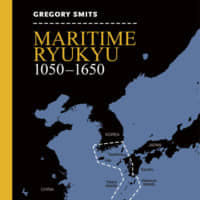For much of its history, the Ryukyu archipelago functioned as a frontier region connecting China, Japan and Korea. Stretching over more than 1,000 kilometers in the East China Sea, its dozens of islands stood in relative isolation, comparatively difficult to reach, forming an ideal refuge for smugglers, marauders and a colorful cast of adventurers, none of whom felt a particularly strong allegiance to any of the regional hegemons.
Maritime Ryukyu, 1050-1650, by Gregory Smits.
318 pages
UNIVERSITY OF HAWAII PRESS, History.
As a fulcrum of exchange, the Ryukyu was multilingual and multicultural from its earliest days. Its first center was not Okinawa, but the Amami Islands, now under the administration of Kagoshima Prefecture. Political and economic power, along with cultural prestige, shifted south only later, firmly coalescing around Naha in the early 16th century.
Interestingly, the Ryukyu integrated East Asia's literary culture late — the earliest, still extant locally produced administrative document dates from 1529. As a result, we know little about the region's history before the 16th century. Archeological evidence has filled some important gaps, but a close reading of nonofficial histories, particularly the "Omoro Soshi," a collection of ancient indigenous songs compiled in the 16th to 17th centuries, can also provide important insights, and is used here as a key primary source.
Though a tad academic, this book is highly informative. The Ryukyu — especially Okinawa — have often been simplistically equated with American marines and military bases. This is a real shame, as they have a rich history that deserves to be much better known. This volume is a good place to start.



